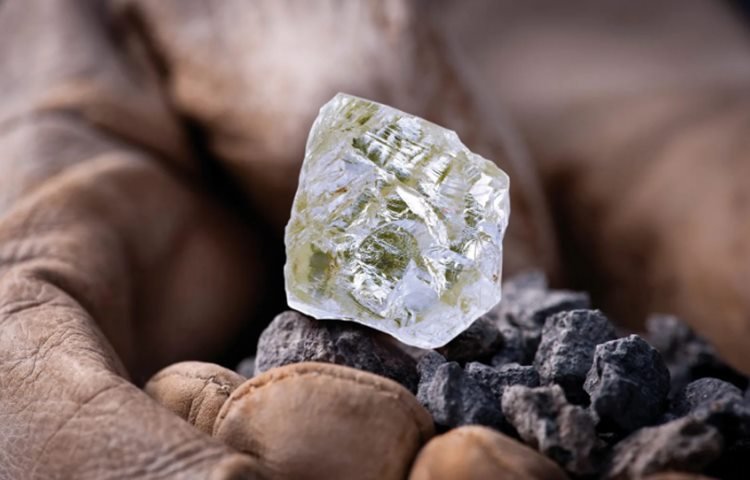6 Interesting Facts About Diamonds
DIAMONDS – In this article, you will know the six (6) magnificent pieces of information concerning the best-known and most sought-after gemstone, diamonds.
There’s an undeniable allure to diamonds that captivates our gaze and refuses to let go of it. For thousands of years, humans have engaged in the trading, gifting, and adorning of these brilliant gemstones.
The earliest known descriptions of diamonds date back to the fourth century BCE, marking the beginning of a history where their value and magnificence have endured. However, diamonds possess more significance than just their role in jewelry. Below, you’ll discover six fascinating facts about diamonds.

1. The Origin of Diamond Engagement Rings Dates Back Nearly 550 Years
Some historians suggest that ancient Egyptian couples initiated the tradition of exchanging symbolic bands of love, a custom later adopted by ancient Romans. Nevertheless, it wasn’t until 1477 that diamonds made their debut in this tradition. During that year, Archduke Maximilian of Austria presented an engagement ring adorned with diamonds to his future wife, Mary of Burgundy. However, it took until the early 20th century for the trend of diamond engagement rings to permeate various societal strata.
As diamonds became more accessible, engagement rings began to feature other precious gems like rubies, emeralds, and topaz, often chosen based on the bride’s birthstone. After the Great Depression, the diamond corporation De Beers embarked on a marketing campaign that transformed their stones into the ultimate symbol of love and commitment, thereby revolutionizing the tradition of exchanging jewelry.
2. Diamonds Serve Purposes Beyond Jewelry
Not every diamond embarks on the journey from beneath the Earth’s surface to a jewelry retailer; in reality, many never reach that destination. Roughly 30% of mined diamonds meet the criteria for jewelry quality, leaving the remaining 70% as “bort,” less attractive diamonds. However, these stones are not discarded, as they have numerous practical applications beyond the realm of jewelry. The durability of diamonds makes them ideal for use in medical devices, electronics, and industrial tools. Dentists rely on drill bits encrusted with diamonds for effective tooth drilling. Similarly, these gemstones are incorporated into saw blades and other tools to enhance their cutting efficacy and extend their lifespan. Some scientists even speculate that diamonds could play a role in advancing electrical power technology, possibly serving as efficient, durable, and heat-resistant transistors, which regulate electrical signals.

3. The World’s Largest Diamond Weighed More Than a Pound Before Carving
Back in 2021, the average size of a diamond in an engagement ring was about 1.5 carats, which is quite tiny when compared to the most massive known diamond globally. Named the Cullinan diamond after its owner, Sir Thomas Cullinan, who owned the mine it came from, this gem tipped the scales at 3,106.75 carats – roughly the size of a clenched fist. Discovered in 1905 at South Africa’s Premier Mine, it eventually found its way to British King Edward VII. The king enlisted the Asscher Diamond Company in Amsterdam to cut the diamond, a colossal task that took six months. The result: nine large stones and 97 smaller ones emerged from this precious rock. Some of these stones, among the largest and clearest diamonds ever found, were integrated into the British crown jewels.
4. Diamonds Can Actually Break
While diamonds are renowned for their exceptional durability, they are not impervious to damage. Recognized as one of the most resilient naturally occurring materials on Earth, diamonds attain a perfect 10 on the Mohs scale, which gauges a mineral’s hardness when scratched. Nonetheless, experts caution against assuming these seemingly indestructible gemstones are completely immune; like all precious stones, diamonds possess vulnerabilities. Inclusions, referring to tiny imperfections within the stone like cavities, specks, and cracks, can impact a diamond’s structural strength. Occasionally, these flaws lead to pressure accumulation within the gem. When subjected to precise impacts, the weakened diamond can fracture, chip, or even shatter. Nearly all diamonds, including lab-created ones, feature some form of inclusion. However, the chances of experiencing a catastrophic fracture remain relatively rare.
5. Earth Had Diamonds Before Dinosaurs
Back in 1948, the iconic marketing campaign by diamond company De Beers declared, “A diamond is forever.” While the primary aim was to boost diamond sales following the aftermath of the Great Depression and World War II, the slogan touched upon a fact about diamonds: they’ve been in existence seemingly since time immemorial. Every diamond found on Earth is estimated to be between 1 billion and 3.5 billion years old, making even the youngest diamonds older than the age of dinosaurs. Some geologists theorize that Earth’s diamond reservoir formed within the first few billion years of the planet’s existence. However, confirming this is particularly challenging as diamonds cannot be dated using carbon dating (which is effective only on organic material less than 60,000 years old). Nonetheless, inclusions within diamonds provide insights; when these imperfections contain other minerals, researchers can approximate the diamond’s age by considering the time when the contaminant was present on the planet’s surface.

6. Diamonds Exist in Space as Well
Diamonds are not exclusive to Earth; they have also been discovered in the vast expanse of the universe. Some are incredibly enormous – take, for instance, the suspected star-turned-planet composed entirely of diamond material, located roughly 4,000 light-years away from our planet. This isn’t the sole celestial body with diamonds; scientists have long suspected that certain planets within our own solar system undergo diamond showers. On Saturn, lightning storms transform the planet’s methane gas into soot, which experiences enough pressure to likely evolve into diamonds that subsequently descend from the sky. Similar phenomena are thought to occur on Neptune and Uranus, where high temperatures and pressure collaborate to generate diamonds that sink toward the cores of these planets. Furthermore, space researchers have uncovered diamonds in meteorites, possibly formed during ancient collisions between dwarf planets and asteroids before finding their way to Earth. These space diamonds continue to captivate scientists as much as their terrestrial counterparts.

